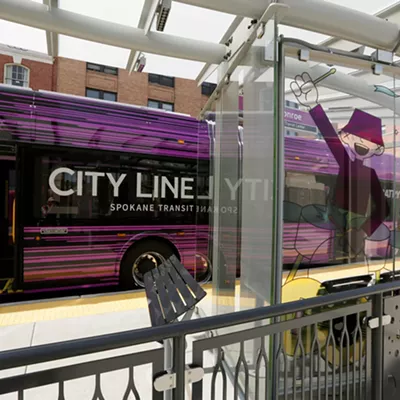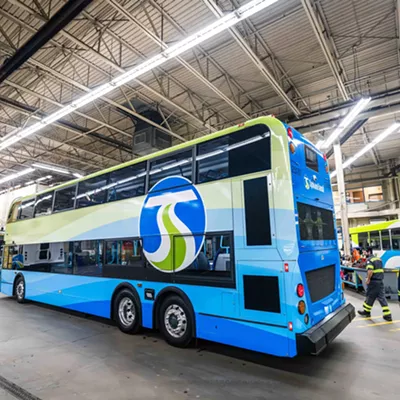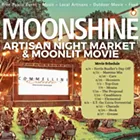To Jessica Engelman, a 32-year-old who recently moved here from Portland, transportation advocacy isn't just a question of getting more bike lanes or better sidewalks. It's about fighting climate change, pushing for equity, reducing housing costs and commute times with better urban planning, and helping humans be healthier and happier.
To help pursue those goals, she founded a new community transportation advocacy group, Spokane Active Transportation (SpokAT), which is focused on making Spokane more friendly to non-car users like cyclists and pedestrians. They've already made gains, such as getting the Spokane City Council to endorse enhancing bike and pedestrian infrastructure on Boone Avenue after nearby Cataldo Avenue was vacated to make room for the Sportsplex.
This interview has been lightly edited for length and clarity.
INLANDER: Why did you form SpokAT? Why should people care about active transportation?
ENGELMAN: Our drive or official mission is to make Spokane a place where anyone who wants to walk, cycle, take public transportation or use micro-mobility feel that it is an option that is safe, comfortable, accessible and available to them. So pretty much anybody who wants to bike feels that they can bike and anyone who wants to walk feels that they can walk.
Finances are the really big one, especially here in Spokane as rents go up. We are going to start seeing issues of displacement increase homelessness, families that were doing OK are suddenly struggling. Because for low-income families, the number one burden to the household budget is housing and number two is transportation. So if we can address that, we can actually help a lot of our low-income population. People who are homeless and people who are very-low income actually have extremely high cycling rates because it's even cheaper than a bus pass.
Climate change is a big one. The transportation sector is the largest producer of greenhouse gas emissions. So, if we want to save our planet, we have to reduce the amount of driving that we do.
What are Spokane's biggest obstacles to creating better pedestrian and bicycle infrastructure?
From the cycling perspective, the lack of bicycle infrastructure downtown. Because, other than the Centennial Trail, there is nothing that I would recommend to anyone but the most courageous, experienced cyclists downtown.
For walking, our lack of good crossing infrastructure on arterial streets is a huge barrier. Even the intersections that have signals, you have to press the button, and sometimes the button doesn't work, and it might not be an accessible intersection or a crossing, and the crossings don't line up with the bus stop so they're not necessarily where you want them to be. The crossings are definitely for cars. They were not designed for people who aren't in cars.
There's a sense that we're late to the game, but since we've started playing, we've done a really good job. We are years behind some other places. And that would hurt us more if we weren't also years behind these other places in terms of overcrowding and development, you know, gentrification and displacement.
What are some of the projects that SpokAT is currently working on?
Our most recent undertaking is that we're making a crowdsourced bike route map for the city, because there are a lot of really good ways to get around the city by bicycle, but very few of them are part of the official bike route map. So if you're new to the city or new to cycling and you try to follow the official routes, there's a good chance you're not going to continue cycling because a lot of them are very uncomfortable and don't feel very safe. But there are a lot of wonderful routes in the city, so we're picking everyone's brains and putting all of the best secret routes into an online map.
And then we're doing unofficial greenway [calm residential streets that are well-suited for biking and walking] development. We're hoping that we can create a greenway network that creates a network of streets that may not have accessible sidewalks, but at least their traffic calms down to the point that if you're in a wheelchair or other mobility device, you feel comfortable riding in the street, and you know that when you get to a major arterial crossing, you will have a safe way to get across. ♦




















